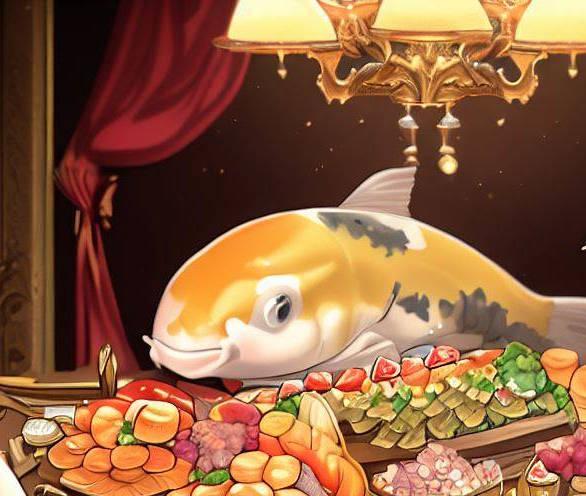Keeping koi is not just a hobby but an art form that requires dedication and attention to detail. Among the various aspects of koi care, feeding plays a crucial role in ensuring the health, growth, and vibrancy of these magnificent fish. Feeding koi is more than simply dropping food into the pond; it requires understanding their dietary needs, establishing a feeding routine, and creating a harmonious feeding environment. In this article, we will delve into the art of koi feeding, exploring the importance of nutrition, feeding strategies, and the profound impact it has on the well-being of your beloved koi.
The Key to Vibrant Health: Nutrition: Proper nutrition is the cornerstone of koi health. A well-balanced diet provides the essential nutrients, vitamins, and minerals necessary for the growth, immune system support, and vibrant colors of your koi. A high-quality koi food should contain a combination of proteins, carbohydrates, fats, vitamins, and minerals tailored specifically for koi. Look for reputable brands that offer a balanced formulation and avoid overfeeding, as excess food can lead to poor water quality and health issues.
Understanding Feeding Strategies
Establishing a feeding routine is crucial to maintaining optimal health and happiness for your koi. Here are some essential feeding strategies to consider:
- Consistency: Consistency is key when it comes to feeding koi. Aim to feed your fish at the same time each day to establish a routine. Koi are creatures of habit and will quickly learn to associate certain times with feeding, making them more active and responsive during feeding periods.
- Portion Control: It's important to provide an appropriate amount of food for your koi, taking into consideration their size and the temperature of the water. Overfeeding can lead to health issues, such as obesity and poor water quality, while underfeeding can stunt their growth and compromise their immune system. Feed your koi an amount they can consume within a few minutes and adjust the quantity as needed.
- Feeding Techniques: There are various feeding techniques you can employ to ensure all your koi receive adequate nutrition. Scatter feeding involves spreading the food across the water's surface, allowing all fish to have access to the food. Hand-feeding is another technique that promotes interaction between you and your koi, strengthening the bond and enabling you to monitor their behavior and health more closely.
Creating a Harmonious Feeding Environment
Beyond nutrition and feeding strategies, creating a harmonious feeding environment contributes to the overall well-being of your koi. Consider the following factors:
- Water Quality: Maintain excellent water quality by regularly testing and monitoring the pond's parameters. A clean and well-filtered environment promotes healthy digestion and reduces the risk of diseases. Remove any uneaten food promptly to prevent water contamination.
- Feeding Zones: Koi are social feeders and tend to gather in certain areas during mealtimes. Creating multiple feeding zones, such as shallow areas or dedicated feeding stations, helps prevent competition and allows all fish to have access to food.
- Seasonal Considerations: Adjusting the feeding routine according to the seasons is crucial. During colder months, when the koi's metabolism slows down, reduce the frequency and quantity of feedings. In warmer months, when their metabolism increases, adjust the diet accordingly to support their growth and energy requirements.
Feeding koi is an art that requires careful attention to nutrition, feeding strategies, and the overall feeding environment. By providing a well-balanced diet, establishing a feeding routine, and creating a harmonious feeding environment, you can nurture the health, growth, and happiness of your koi. Embrace the art of koi feeding,
